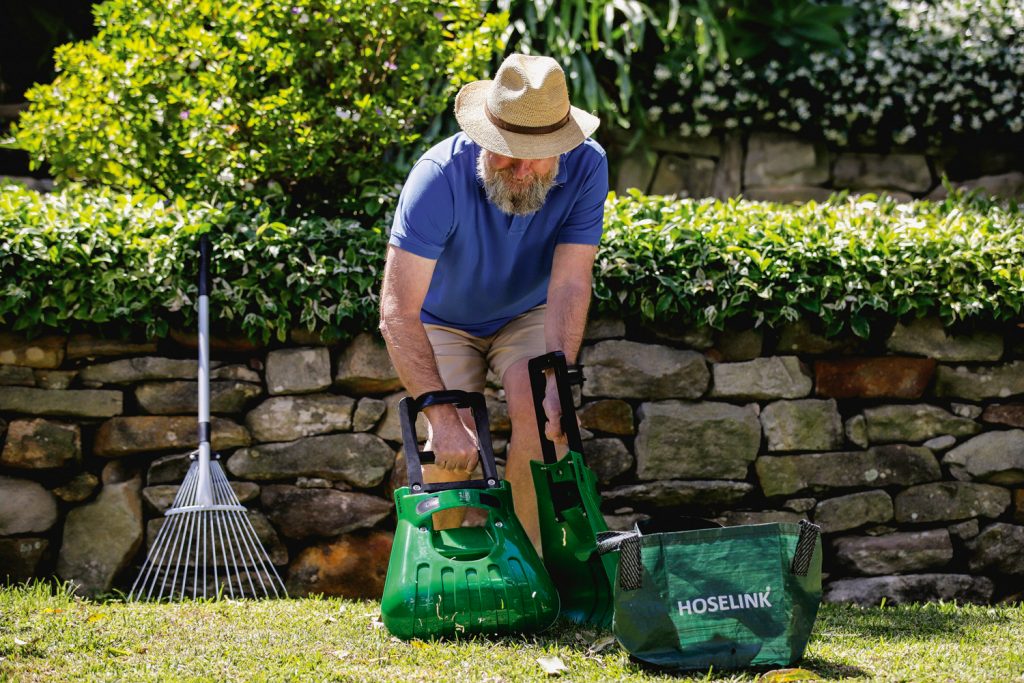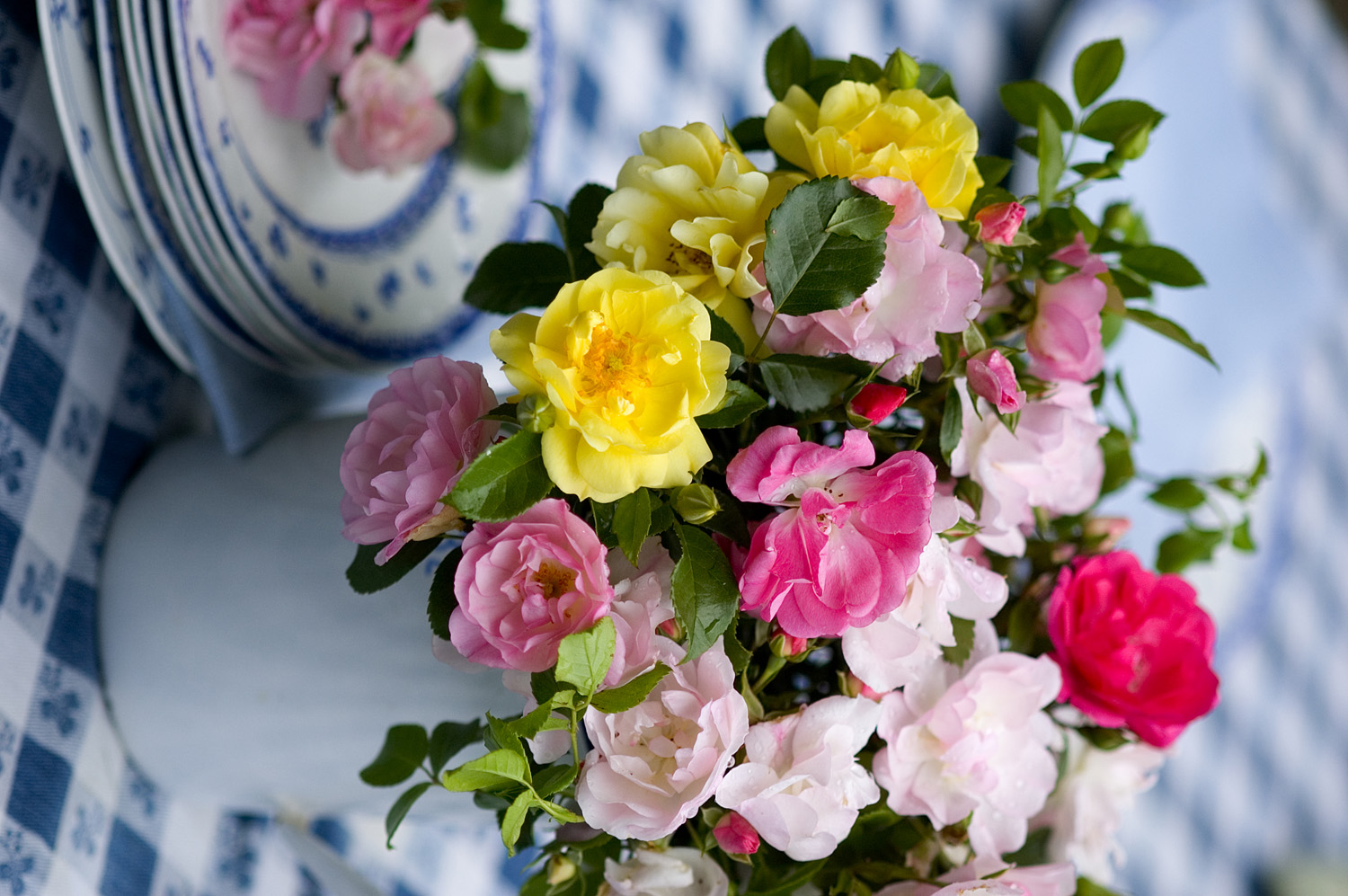By developing a regular garden maintenance routine, you’ll cut down on the work required to keep it looking good year-round
Preventative maintenance is key and will save you time and money in the long run.
Horticulturalist Colin Johnson from Earthlife, a leading provider of soil conditioners and fertilisers, says it pays to get to know your garden and keep a close eye on any changes. “I always say 50 per cent of gardening is observation,” he shares. So grab your morning cuppa and take a stroll around your garden from time to time. This will allow you to see what jobs might need doing and to assess the health of your plants.
Monitor your garden’s soil condition
Getting started on the right foot is important. When planning a garden, good design is crucial. This means what you’ve planted is getting sufficient sunlight/shade for its needs. Once you’ve planted the garden, soil condition is another key aspect of garden maintenance, as depleting minerals in the soil will impact on the health of plants over time.
Colin suggests introducing a mineral mix into the soil. “Try rock dust, which is volcanic minerals, and if you can source one with soil biology in it, that’s even better,” he adds. Every three months, throw it around the plants, which will build up the levels, then cut back to twice yearly. “Your aim is to create a natural soil ecosystem so the plants will tap into that,” explains Colin.
Add fertiliser if your plants need more nutrients
Getting the soil right is key, but even with added rock dust, sometimes plants might need a helping hand. “A supplemental boost of fertiliser can help if a plant isn’t flowering as well as it could be, or it might form buds but they fall off,” says Colin. “It’s a bit like us taking a multi-vitamin when we need it.”
Prune and edge plants regularly
Hedging and screening plants need regular maintenance so they don’t look scruffy and overgrown. Colin suggests regular pruning when the plants are young to keep them in shape. To begin with, work out the height and edge or line that you want the hedge to grow to. “The height is particularly important; if you let it get too tall, a hedge can lose the bottom foliage,” he points out. How frequently you trim hedging plants depends on the plant and its aspect. “For example, a popular hedging pant, lilly pilly, grows very fast, so you might need to trim it a few times during spring and through summer,” says Colin.
Caring for pond gardens
Inviting wildlife into your garden is a wonderful way to improve biodiversity; before you know it, butterflies, frogs, lizards and birds will be flocking in. One way to do that is with a pond, but ponds do require a little maintenance. Colin suggests removing leaf litter from the top of the pond every six weeks, and every year, thin out plants growing in the pond. If you continue to do this, and work to create a natural environment by inviting in wildlife, there’s a lot less maintenance, according to Colin. Getting it set up right will also reduce maintenance. “A few marginals in pots around the edges, like Sedges, and one or two oxygenators, like Ribbon Plant, will work well and after a couple of years, the pond will be self-sustaining,” he says.
Grass maintenance
The feel of soft grass underfoot is one of life’s simple pleasures, but it can take regular maintenance to keep it looking good. Give the lawn a watering when you see the leaf start to wilt, and mow regularly to keep it looking good. Joe Rogers from Lawn Solutions Australia says cutting grass encourages lateral growth to cover patchy areas. But when you do mow, don’t cut the grass too short. “The rule of thumb is to only take 30 per cent of the leaf or you’ll cause your lawn to scalp and discolour,” he says.
Routinely fertilising your lawn will keep it looking good. “An established lawn should be fertilised at the start of spring, middle of summer and around Easter as well,” explains Joe. If your lawn is struggling despite regular watering and fertilising, there could be an issue with grass compaction. Joes says to test it by poking a screwdriver into a few areas of the lawn. If the screwdriver is hard to remove, you need to aerate your lawn. “When a lawn is properly decompacted, it allows roots to grow more easily and air, water and nutrients can get deeper into the soil,” he says.
Even with a regular maintenance routine in place, it’s not always possible to have healthy, thriving natural lawns. Sometimes lawn areas don’t receive sufficient sunlight to grow grass well, or in high-traffic areas, kids and pets can leave grassy spaces looking like a dust bowl. Synthetic lawns can be a viable and attractive alternative. There’s no maintenance other than the occasional weed that might find its way through. For optimal results, have your artificial grass installed by an expert.
Tool time
Regular garden maintenance also means taking care of gardening tools. That’s because tools that aren’t cleaned regularly can spread dirt, fungi and weeds between garden beds. It’s also important to oil tools regularly. Turf equipment mechanic Wayne Morris says linseed or vegetable oil works well. “Apply to a cotton rag and rub over the front and back of the tool,” he suggests. “For tools that have moveable parts, like secateurs, apply a lubricant like lanolin.” For your lawnmower, Wayne advises an annual service. “Every 25 hours of operation, the air filter should be cleaned and the oil changed,” he recommends. “And remember that fuel stored for longer than six weeks needs fuel stabiliser added.”
Wily weeds
Weeds compete with plants for moisture and soil nutrients, so keeping on top of them is important for the health of your plants. It’s easier to hand pull weeds after a little light rainfall, but you can pour boiling water on them or use a weed spray — organic is always best.
Prevention is better than culling weeds. A good mulch layer will help to inhibit weeds, so refreshing mulch as part of your garden maintenance is a good idea. Colin says if you’re using a light mulch like tea tree, use a thin layer as it will form a mat, preventing water penetrating. “Planting close together will also discourage weeds because if there’s bare soil and it’s getting sufficient sunlight, nature will put something in there if you don’t,” he warns.
Watering equipment
Water is a precious commodity and regularly checking your drip irrigation system for broken hose joiners or leaks will ensure none is wasted. Do a visual check of hoses for cracks and leaks because if a watering system is exposed to full sun, over time it will soften and crack. “If the hose system hasn’t been used for a while, that’s when ants will get in and when you turn it on, ants will clog the sprinklers, so turn it on occasionally even when not using,” adds Colin.
Cleaning outdoor furniture
To keep outdoor furniture looking pristine, seasonal cleaning will help you keep on top of it. For aluminium furniture, give it a light hose and for any hard-to-remove stains, use warm soapy water. Timber furniture needs a light brush. Wash with warm soapy water, then dry immediately with another cloth to avoid water spots. Apply furniture oil every six to 12 months to keep it looking fresh and clean. For wicker furniture, clean with a soft brush to remove dirt and cobwebs, then give it a scrub with warm soapy water.
Outdoor cushions can become grubby over time, and regular spot checks to remove bird droppings is important. To clean, lightly hose them down and gently scrub with a mix of detergent and warm water, then hose them again and allow to dry.
Always check the manufacturer’s instructions for cleaning outdoor furniture.
If in doubt, only use cleaning products on a small section to check for colour fastness.
Gutters for leaves
Checking for leaf build-up in gutters prevents blocked drains and pipes. Leaf build-up can lead to water finding its way into roof cavities, which can be a costly repair. A build-up of leaves in gutters is also a fire hazard. How often you’ll need to clear gutters depends on how close overhanging branches are to your home. Clean leaves by hand or use a leaf blower; you might need a hose and multipurpose cleaner if there is dirt build-up. Of course, safety is paramount. If you aren’t comfortable climbing a ladder, it’s a job best outsourced to a handyman service.
Cleaning the deck
Give your deck a good clean with a soft-bristle broom. You can give it an occasional mop, blower vac or light-pressure wash. How often you’ll need to reoil your deck depends on the amount of exposure to full sun, its location and the finish that’s applied. It’s generally recommended to reoil a deck every 12 months; check the oil manufacturer’s instructions for regular maintenance guidelines.
Gardens for wildlife
Want to attract wildlife to your garden? Colin suggests planting rosemary and lavender as these are two of the best plants to introduce bees, and small grevilleas to invite birdlife.
Colin says there is a misconception that for wildlife gardens have to be rambling and unkempt. “That’s not true; you can prune plants to shape and there are also beautiful ornamentals like Buddleia and Pentas that attract butterflies.”
Want more great gardening advice? Check out our garden tips archive






















